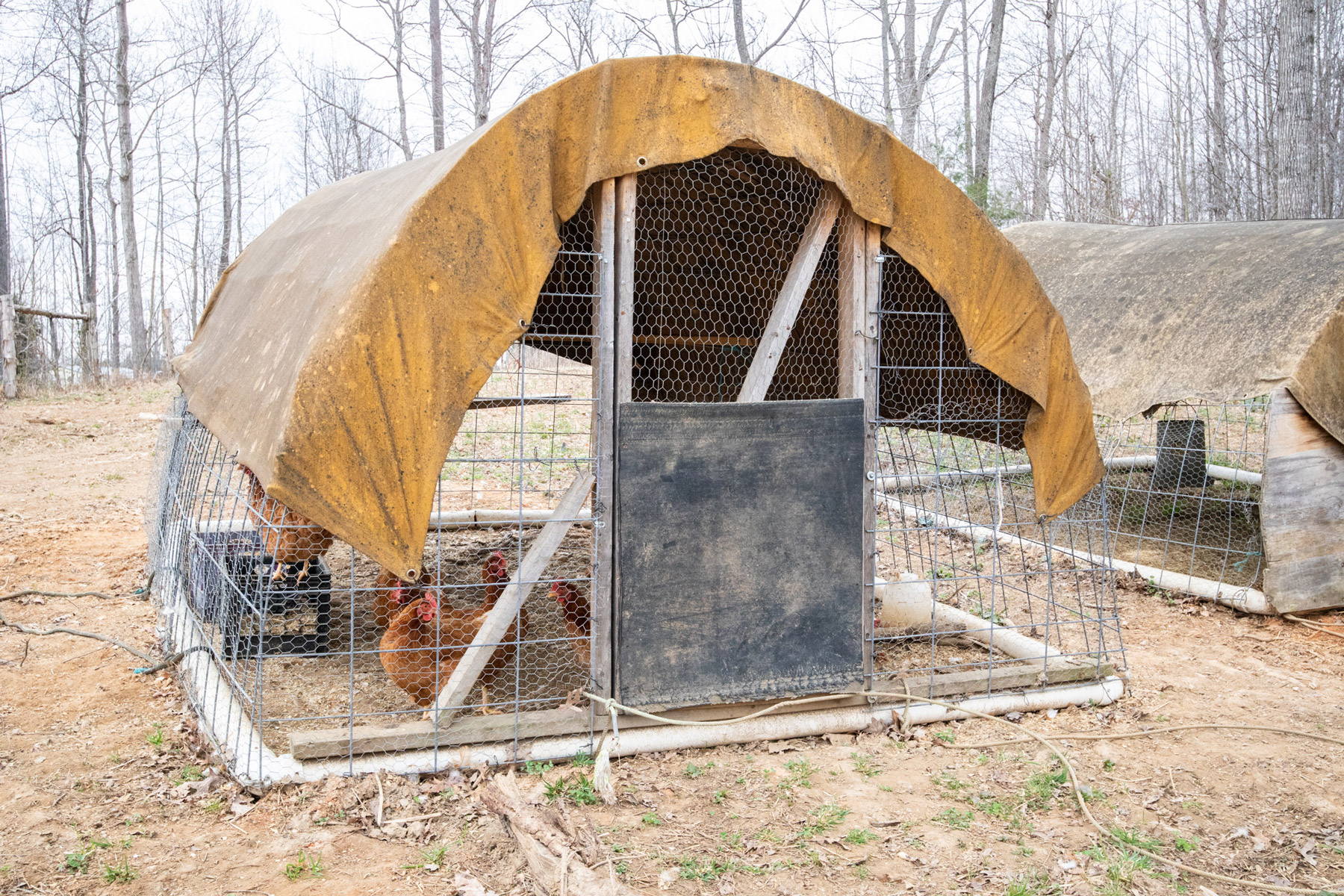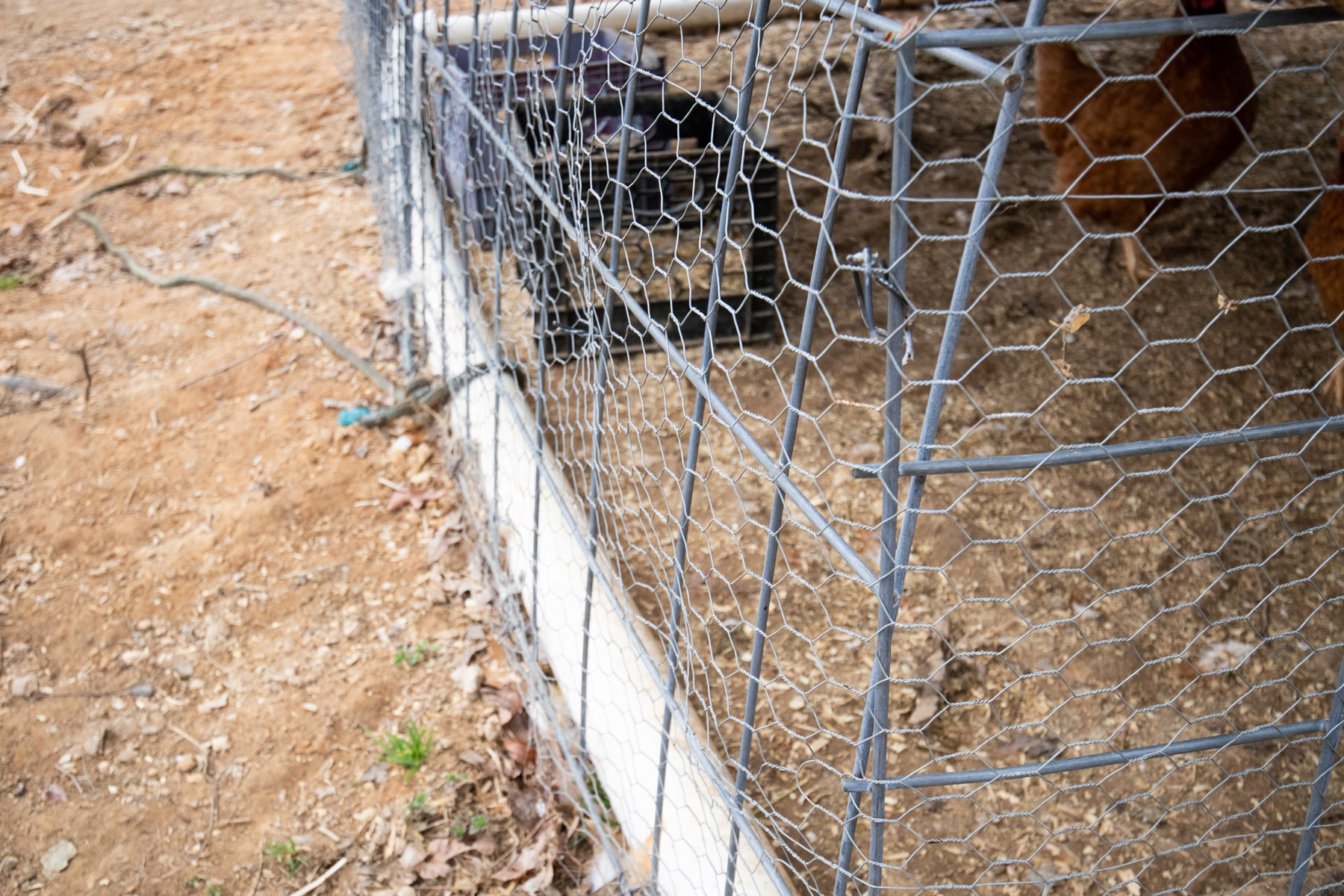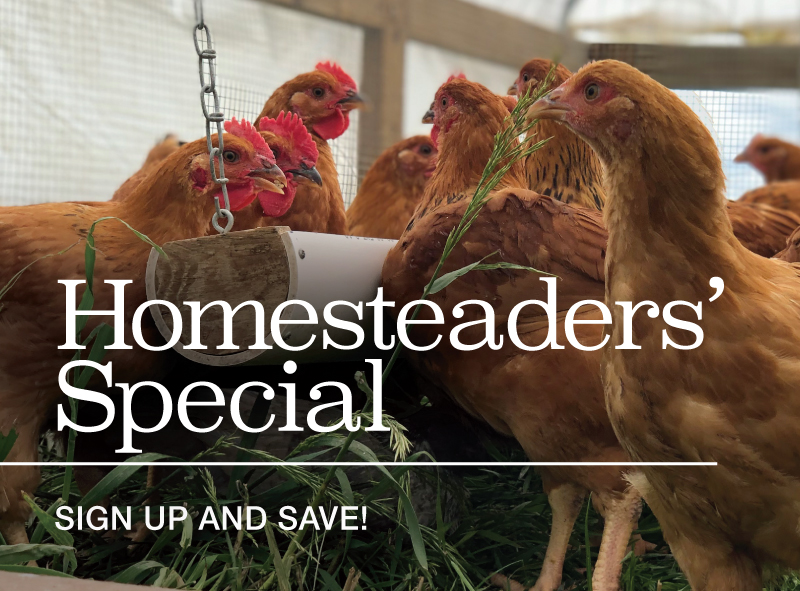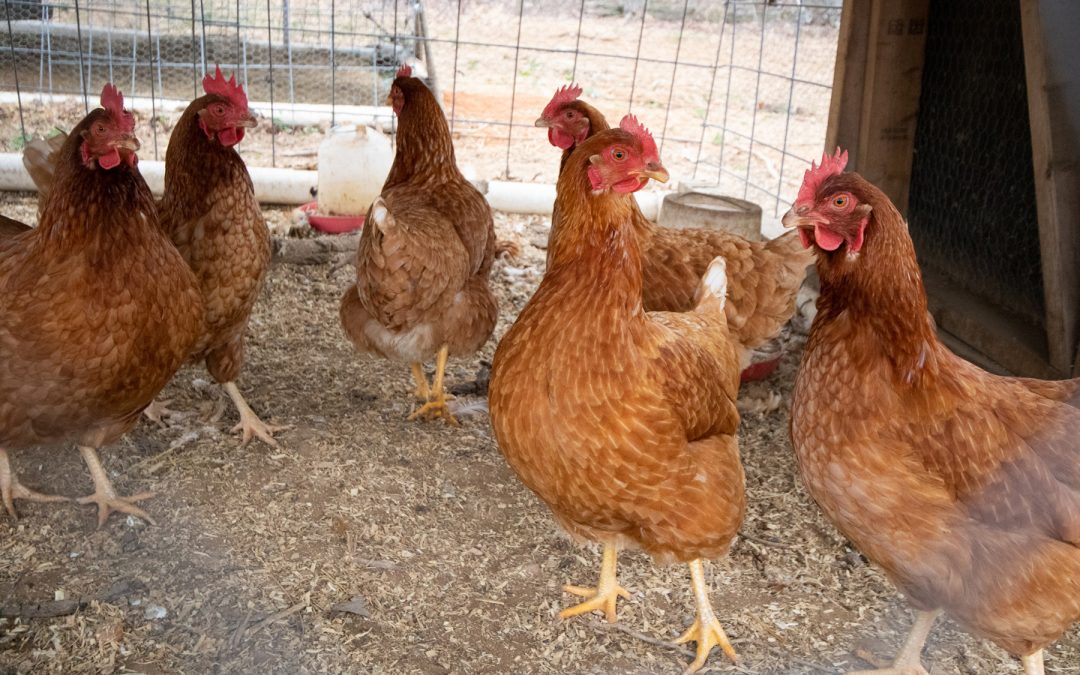An easy chicken coop. Is there even such a thing? With the plethora of chicken coop plans that are out there, sometimes we just want something simple and easy. A DIY chicken coop is even better especially if you’re on a budget. Make it a chicken tractor, and we’ve got a deal!
I can remember when my husband first told me he wanted to get chickens. I remind him of this often, because he isn’t the “chicken” type at all. In fact, he often threatens to get rid of his chickens (aka, my chickens), and I just chuckle. I’ll never forget that late summer evening in the middle of a field, trying to catch two chickens that a friend of mine had left behind when she moved the week before. She told me we could have them as our very first chickens . . . but we had to catch them first.
Have you ever tried to catch a chicken in a field? Yeah, it’s about darn near impossible. But somehow, we did it . . . twice. When we arrived home, they had no place to live. Literally, they sat underneath a tarped area sectioned off with gardening wire. I’ll never suggest that type of DIY chicken coop, but hey, you do what you have to do!
Now that we’re more experienced, setting up a quick and easy chicken coop is, well, easy. You only need a few things that you may already have laying around the homestead. If not, it’s just a quick run to the local farm store or home improvement store.
Now, this blog post isn’t a “make cuts here and screw things there” type of thing. This is literally a “here’s a photo, it’s that simple” type of blog post. Really, it’s really that simple. But I’ll at least give you a list of what you’ll need and some basic instructions. Use the photos as your guide.
- 3 cattle panels–depending on how long you want the coop (I recommend 2 full size, and one full size cut in half — you’ll see more in instructions)
- 1 Large tarp (at least 16×20, but larger is always better)
- 8 two-by-four’s OR 6 to 8 t-posts (we normally opt for t-posts for a quick pop up coop)
- Chicken wire and/or hardware cloth
- Random zip ties and wires, or staples (because every farm runs off of this)
If you’re looking for more of a solid structure that can be moved around like a chicken tractor, I highly recommend checking out John Suscovich’s chicken tractor plans, which look a lot like the one we’re making in this blog post, but they are much more professional. The only difference is that the one we’re building is meant to be a temporary structure that isn’t easily movable each day (or at all). But it’s a great option when you’re in a bind.

Putting Your Easy Chicken Coop Together
The best part is there really is no perfect way to do this. You’ll simply bend your two cattle panels to make two arches. You can allow the ground to work with you and hold the panels in place where you want them.
Using T-Posts as Your Anchors
- Choose your location for your coop.
- Bend your cattle panels into arches. Zip tie the arches together at the top and down the sides.
- Drive the t-posts into the ground, equally spaced apart, on both sides of the cattle panels (on the outside of the panels). Allow the t-posts to come about halfway up the cattle panel, but far enough into the ground to be sturdy. Zip tie the panels to the t-posts. Example: two t-posts per cattle panel on each side, making 4 t-posts total per side.
- Take your two pieces of cut cattle panels and place one on the bottom half of the back opening (zip tied) making sure there are no spaces for chickens to squeeze through. Place the other half of the cattle panel on the front opening, and only zip tie half of it. This will work as a makeshift gate.
- For the remainder of the coop, cover the top with your tarp, and the bottom half of the coop (and the top halves of the openings) with chicken wire or hardware cloth (hardware cloth preferred). I like to use chicken wire on the top half, and hardware cloth on the bottom half of the coop. Close every hole possible with your wire.
- If you prefer to have an actual door that you can walk in and out of upright, you’ll need to take the cattle panel and arrange it to your liking. The photo shows cattle panel pieces on the sides of the front opening, with a door that opens and closes with another piece of cattle panel. You’ll have to do what works best for you and your time constraints. But it doesn’t have to be complicated to be functional.
Using Wood as Your Anchors
- If you prefer to use wood instead of t-posts, do all of the steps for the t-post method, but then at step number 3, use the following steps below.
- Cattle panels are normally about 4 feet in width and 16 feet in length. A standard 2×4 is 8 feet long. You’ll need one 2×4 for each long side of your coop. Simply put your 2×4 up against the arched cattle panels and staple (or zip tie) your cattle panels to the 2×4. Do this for each long side of your coop.
- Next, use one to two (depending on how you want your width of the coop to be) 2x4s on the openings of the coop. Screw these 2x4s on each end of the 2x4s that are on the long width of your coop that you first set in place. When you’re done, you’ll have made a rectangle with all of your 2x4s.
- Next, you’ll add your halved cattle panels, just as in the previous instructions. If you want to create a door, see the instructions 4 through 6 of the t-posts method. The only difference is that you can staple or zip tie your cattle panels to the wood, and then zip tie the sides to the other cattle panels. You should have extra 2x4s leftover to make a door if you wish to.
In the photos, you’ll notice that piping was used instead of t-posts or wood. This is another option. You would simply use piping and elbow piping connectors instead of wood or t-posts.

And it’s really that simple. All done!
Now, I know these instructions aren’t crazy amazing or anything. But truly, once you take a good look at these photos, I think you’ll get the point of this extremely versatile coop. You can use what you have, which is the most amazing part. Whether you choose t-posts, 2x4s, or even piping as your anchor structure … it all works the same! Don’t overthink it, just go with it! This quick and easy chicken coop won’t let you down.

NEW Homesteader’s Special Available in 2020 from McMurray Hatchery
McMurray Hatchery is proud to partner with Homesteaders across the country, and support more sustainable lifestyles, by offering our new
Homesteaders’ Special. Our Homesteaders’ Special makes it easier to raise your own flock for meat and eggs:
- Register as a Homesteader by calling (800) 456-3280
- Purchase a minimum of 350 birds per year
- Choose your savings: 20% OFF OR 60-DAY TERMS!


